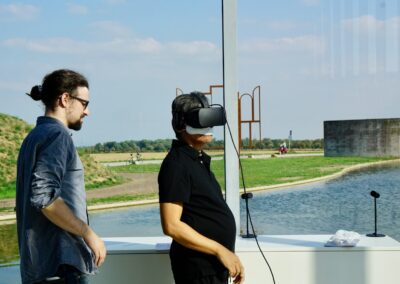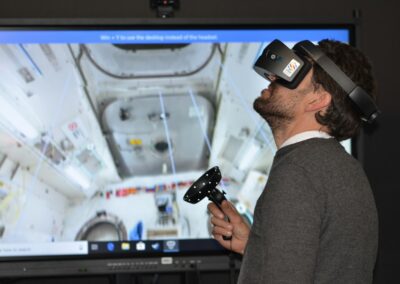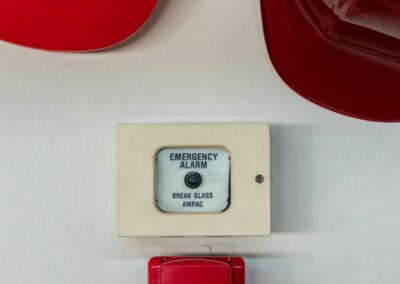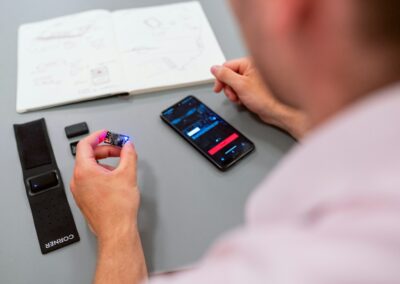Revolutionizing Training with Immersive Technologies
Enhancing Skill Development through Immersive Training
The benefits of using immersive training programs for high-risk professions, such as healthcare and emergency services, are manifold. Immersive training technologies, including Virtual Reality (VR) and Augmented Reality (AR), provide realistic simulations that enhance skill development in ways traditional training methods cannot. These technologies enable trainees to practice procedures and respond to emergencies in a controlled, safe environment, which is crucial for professions where hands-on practice is essential.
In high-stakes environments like operating rooms or emergency scenes, mistakes can be costly. Immersive training allows healthcare professionals and emergency responders to make and learn from errors without real-world consequences. For instance, surgeons can perform virtual surgeries, honing their skills and techniques, while paramedics can simulate various emergency scenarios, preparing them for real-life situations. This level of preparation is invaluable, leading to improved outcomes and increased confidence in professionals’ abilities.
Real-Time Feedback and Performance Analytics
One of the standout features of immersive training programs is the ability to provide real-time feedback and performance analytics. Advanced VR and AR systems can track a trainee’s actions and offer immediate, detailed feedback on their performance. This feedback is crucial for continuous improvement, allowing trainees to identify areas of strength and weakness and adjust their techniques accordingly.
Incorporating AI-driven analytics, these programs can personalize training experiences based on individual performance data. For example, a trainee struggling with specific procedures can receive targeted practice sessions to address these areas. This personalized approach to training ensures that each professional receives the support they need to excel, leading to higher competency levels across the board. In regions like Saudi Arabia and the UAE, where investment in advanced technologies is a priority, immersive training programs are well-aligned with national development goals, particularly in healthcare and emergency services.
Cost-Effectiveness and Resource Efficiency
Immersive training programs are also cost-effective and resource-efficient compared to traditional training methods. Traditional training often requires physical resources, such as medical supplies, training dummies, and live patients, which can be expensive and logistically challenging. VR and AR simulations eliminate the need for these resources by creating realistic digital environments where trainees can practice endlessly without depleting supplies.
Moreover, immersive training can be conducted remotely, reducing the need for travel and accommodation expenses for trainees. This is particularly beneficial in expansive regions like Saudi Arabia and the UAE, where professionals may need to travel significant distances for training. By adopting immersive training technologies, organizations can ensure that their personnel receive high-quality, consistent training while optimizing their training budgets.
Improving Safety and Preparedness in High-Risk Professions
Simulating Real-World Scenarios
Immersive training programs excel at simulating real-world scenarios, which is vital for high-risk professions. Healthcare and emergency services professionals must be prepared for a wide range of situations, many of which can be rare but critical. VR and AR technologies can recreate these scenarios with high fidelity, providing trainees with the experience they need to respond effectively.
For example, emergency responders can train for natural disasters, terrorist attacks, and mass casualty incidents, experiencing the pressure and complexity of these situations without the associated risks. Healthcare professionals can practice rare but critical procedures, ensuring they are prepared for any eventuality. These realistic simulations help build muscle memory and cognitive readiness, crucial for performing under pressure in real-life situations.
Building Confidence and Reducing Stress
One of the significant psychological benefits of immersive training is the increased confidence it instills in trainees. By repeatedly practicing in realistic, high-pressure environments, professionals become more confident in their abilities to handle real-world challenges. This confidence is particularly important in high-risk professions, where hesitation or uncertainty can have serious consequences.
Additionally, immersive training can help reduce stress by familiarizing professionals with the types of situations they may encounter. When faced with actual emergencies, the scenarios will feel less foreign and overwhelming, allowing them to remain calm and focused. This psychological preparedness is as important as the technical skills gained, ensuring that professionals can perform at their best when it matters most.
Fostering Collaboration and Teamwork
High-risk professions often require seamless collaboration and teamwork. Immersive training programs can simulate scenarios that require coordinated responses from multiple professionals, helping them develop and refine their teamwork skills. For instance, in healthcare, a VR simulation can involve doctors, nurses, and paramedics working together to manage a complex patient case, mirroring the dynamics of a real hospital setting.
These collaborative simulations foster better communication and coordination among team members, which is critical for successful outcomes in high-stakes environments. By practicing together in a virtual setting, professionals can develop a deeper understanding of each other’s roles and improve their ability to work as a cohesive unit. In regions like Riyadh and Dubai, where cutting-edge technology and innovation are emphasized, immersive training programs can significantly enhance the preparedness and effectiveness of healthcare and emergency services teams.
Conclusion
In conclusion, the benefits of immersive training programs for high-risk professions, such as healthcare and emergency services, are substantial. These programs offer enhanced skill development, real-time feedback, and performance analytics, making training more effective and personalized. They are cost-effective and resource-efficient, allowing organizations to optimize their training budgets while providing high-quality education.
Moreover, immersive training programs improve safety and preparedness by simulating real-world scenarios, building confidence, and reducing stress. They also foster collaboration and teamwork, essential for high-risk professions. As regions like Saudi Arabia and the UAE continue to invest in advanced technologies, the adoption of immersive training programs aligns perfectly with their goals of enhancing the quality and effectiveness of their healthcare and emergency services.
By embracing these innovative training methods, organizations can ensure that their professionals are well-prepared to handle the challenges of their respective fields, ultimately leading to better outcomes and improved public safety.
#ImmersiveTraining #HighRiskProfessions #HealthcareTraining #EmergencyServicesTraining #VRTraining #ARTraining #AIinTraining #GenerativeAI #SaudiArabia #UAE #Riyadh #Dubai #BusinessSuccess #LeadershipSkills #ManagementSkills #ProjectManagement























